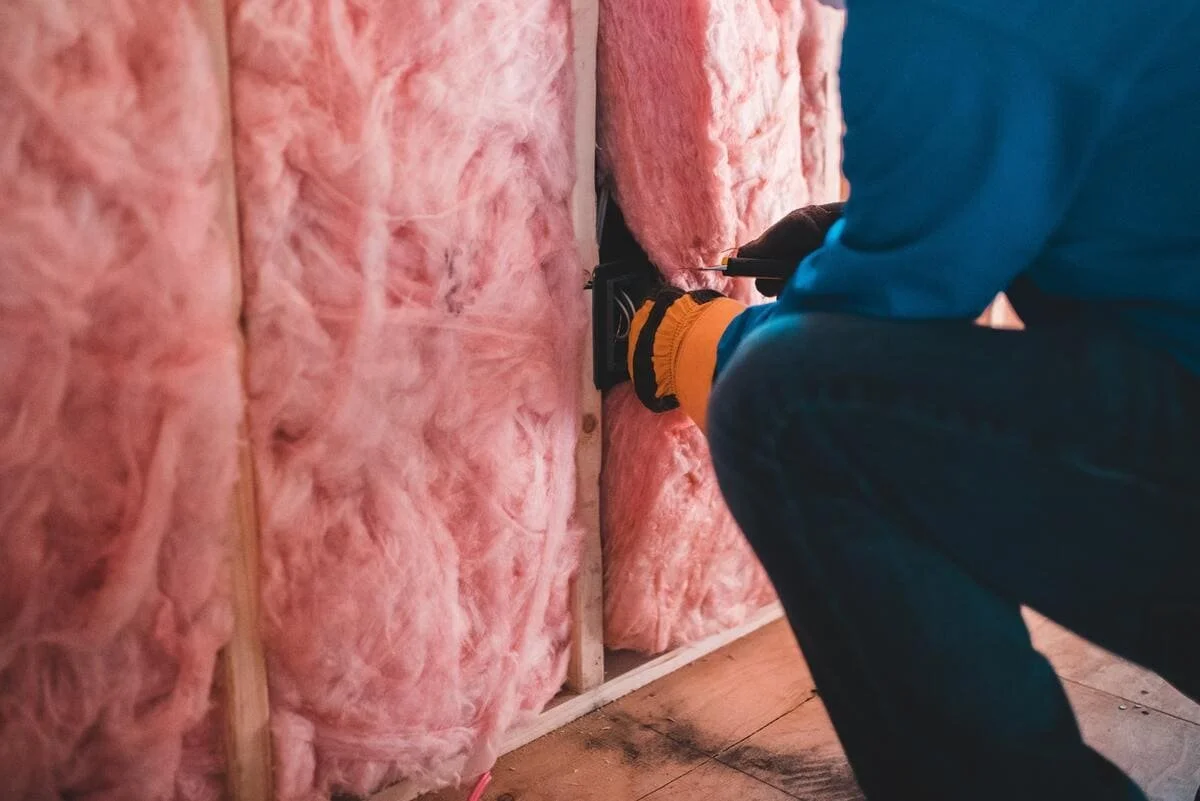The Ultimate Guide to Insulation
With energy bills going up and up, it can be tough to accept spending so much money to keep warm and comfortable at home. But there’s a practical way to keep your house warm without turning up the heating. It’s all in the insulation.
Why Is Home Insulation Important?
The purpose of insulation is to keep air from escaping out, or creeping into, your home. With a little less in-out air action, your heating system has to work less hard to maintain a comfortable temperature and will be more efficient.
Outside general temperature control, there are other practical reasons for insulating your home. Here are some of them:
Moisture control
Damp is every homeowner’s worst nightmare. A little moisture will inevitably get in with the continuous opening and closing of doors throughout the day. Plus, indoor activities like washing clothes, cooking, and taking showers all create moisture within your home.
However, moisture in the home makes the ideal environment for mildew and mold to grow. If your home is insulated, less water from the outside can creep in, preventing mold and all the health hazards that go with it.
Energy-efficient
For the best home insulation, planning is essential. Work out where your home is least insulated. For example, start with exterior walls around the home that make the initial barrier from the outside. Next, ensure your attic is insulated.
During the winter, the hot air distributed from your AC unit increases. Insulation over the ceiling will help hold that heat in your home, keeping you nice and cozy. Plus, this will mean your home is kept at a more stable temperature, so your heating system runs more efficiently.
Volume control
Many insulation types absorb sound vibration, which lowers noise from different sources like children, media equipment, appliances, pets, social gatherings, and anything else making noise in your home.
Good insulation will insulate sound on the floors and walls, offering you, and your neighbors, a quieter atmosphere all around.
Cost-efficient
Insulation keeps your house at a stable temperature, irrespective of how cold or warm it is outside. That lessens your heating and cooling costs, as your air conditioner is not switching off and on the whole time, wasting energy.
How Can Insulation Improve your Home Besides Saving You Money?
Properly insulating your home means you can control your home’s air quality and temperature levels. Made to keep your home warm during the winter and cool in the summer, a properly insulated home means less work for your heating and cooling system.
Check out these ways that home insulation can save you money every month:
Home Value
Properly insulated homes are more energy-efficient and minimize the risk of structural damage from any moisture. Such factors come into play when identifying the value of a home, particularly with different types of insulation accessible. So insulating your home will make it more valuable.
Noise
Not all types of home insulation are efficient at minimizing noise, but a properly insulated home won’t be as loud. It doesn’t just create a barrier for heat, moisture, and air but can help block out unwanted noise.
Air quality
A lesser-known advantage of insulation is its impact on your home’s air quality. Outside dust and allergens cannot seep in when the insulation works properly. So insulation can help keep your home healthy and mold-free.
Heating and cooling
But let’s face it, the best reason for getting insulation is to save your hard-earned cash. Less heat escaping means less money burned heating your home. It’s kind of a no-brainer.
How To Install It
Ok, so we’ve drilled home the benefits of insulation, but how do you get some of the fluffy stuff yourself? Filing your walls and roof with a layer of fiberglass insulation is one of the simplest and most cost-efficient ways to make your home energy-efficient. All it takes is a pair of safety glasses, a utility knife, and patience to ensure the insulation fills the stud cavity, top to bottom and side to side, without overly compressing.
1. Get ready
Ensure you have the proper size, amount, and insulation product for your DIY project. Where are you going to insulate, which parts need it most, and where is your heat escaping?
2. Gather your materials and tools
You will need safety glasses, a utility knife, gloves, and a long stick to help you get into hard-to-reach areas. Also, you might like to use a kneeling board—it is more comfortable than kneeling on rafters.
3. Install the batts
We also suggest preloading the batts into the ceiling space before you begin. That can help make the entire process faster.
Begin from the point furthest from the manhole, and then work your way up backward. Strive for a snug fit and an even height. You can also trim the insulation to fit better as you work.
In addition, make sure to save the cuts to fill in any gaps.
4. Leave clearances around any lights
Ensure you leave sufficient space around piping, lights, extractor fans, and ventilation. You must put insulation under electrical cables wherever possible.
Precautions
If you’re planning to install ceiling insulation on your own, ensure you take all the needed safety precautions. These include:
Ventilation – Ensure there’s enough ventilation in the roof cavity. If the roof is tiled, you can remove a few tiles to let in more air.
Heat – Avoid insulating your home while it’s hot out or someone’s running a bath, as temperatures can soar in the roof.
Safety glasses and mask – The ceiling cavity can be dusty, particularly in older homes. Safety glasses protect your eyes from dirt, dust, and other particles you might encounter.
Water – Installing insulation can take a while. Ensure you have a bottle of water, so you don’t need to go down to the house whenever you need a drink.
High monthly bills are one of the most stressful things in life. If you’d like to cut them down, try insulating your home. You may choose to cut costs by undertaking insulation yourself but get in touch with us for a free consultation if you’re unsure about anything.
If you’re looking to save more money this winter, check out our blog for all the tips you could ever want to save you money and slash your energy bills this winter.


